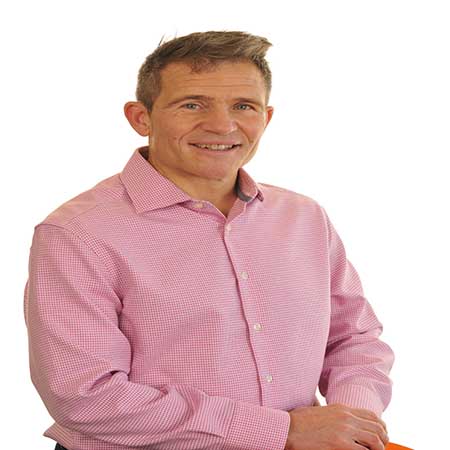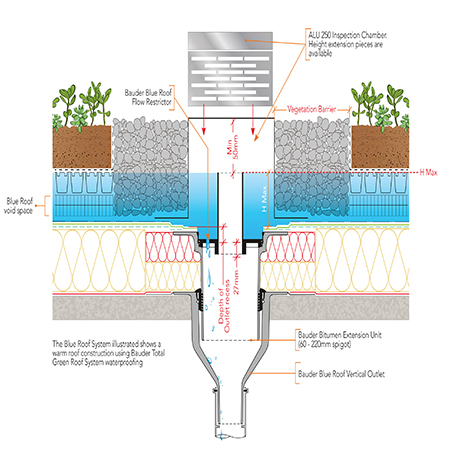The BS6229:2018 – Flat Roofs with Continuously Supported Flexible Waterproof Coverings update was published in November, overriding the 2003 edition.
Bauder’s technical director, Nigel Blacklock, has been an active member of the Technical Work Group for the duration of the amendment along with representatives from NHBC, BBA, BRE, RIBA, NFRC, SPRA and manufacturers.
Nigel and Chris Roddick, green and blue roof product manager for Bauder, discuss the changes in the BS6229:2018 update that impact rooftop water management solutions.
Nigel, can you outline the updates to BS6229 that relate to blue roofs and why they came about?
Nigel: The main considerations in the update relate to structure, drainage and thermal performance. A blue roof is a good example of a new technology that has come along in the last 15 years and needs consideration.
Chris, tell us about Bauder’s rooftop SuDS system, BauderBLUE
Chris: BauderBLUE is a blue roof system which attenuates heavy rainfall and controls its discharge over a 24-hour period. Calculations are made to factor in the site location, catchment areas and discharge rates from other elements of the site to ensure that the water run off during storm conditions meets drainage requirements of local planning authorities.
So, how will the revisions in BS6229 update impact the design considerations for a BauderBLUE roof?
Chris: The 2018 update clarifies and reinforces the meaning of a zero falls roof used in most blue roof systems. A zero falls roof is defined as having no more than a 1:80 fall, but more importantly the roof must not have any back falls away from outlets. This will mean all back falls must be corrected with localised latex screed or additional outlets.
Nigel, you mentioned structural considerations. How does this tie in with zero falls?
Nigel: A blue roof designer needs to account for the dead and imposed loads of the system build-up and the maximum potential retained rainwater, this tends to lead to a concrete slab being used.
A detailed structural analysis of the deck should account for construction tolerances, settlement and deflection under load with a concrete slab level survey carried out to identify any back-falls prior to the waterproofing being installed. Hence the advice “design a fall of 1 in 80 to achieve not less than zero”, starting at zero inevitably will lead to back-falls.
How does the thermal performance update apply to a blue roof?
Chris: Unlike a traditional warm roof, the U-value achieved in an inverted roof greatly depends upon the amount of water that passes through the joints of the insulation and sits on the waterproofing, as this will cause rainwater cooling. This has a negative effect upon the roof insulation value.
Nigel: So, there is now a note that suggests that not less than 10% is added to the thickness of the insulation to take account of rainwater cooling. However, water on an inverted blue roof might sit on the waterproofing for longer and with a greater depth, BS6229:2018 states no correction factor should be used which will lead to much thicker insulation than is currently used. This could effectively censure installing blue roofs over inverted insulation.
Bauder discuss changes that impact rooftop water management solutions
Bauder Ltd
View company profile| T | (01473) 257671 |
|---|---|
| F | (01473) 230761 |
| E | info@bauder.co.uk |
| W | Visit Bauder Ltd's website |
| 70 Landseer Rd, Ipswich, Suffolk, IP3 0DH |
Categories
Green roofs



